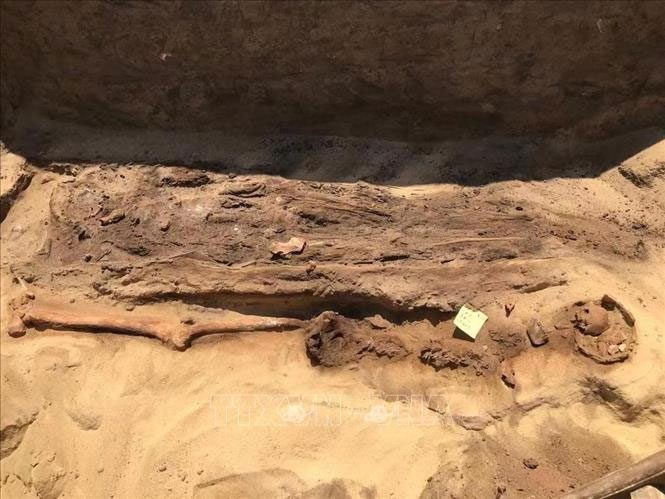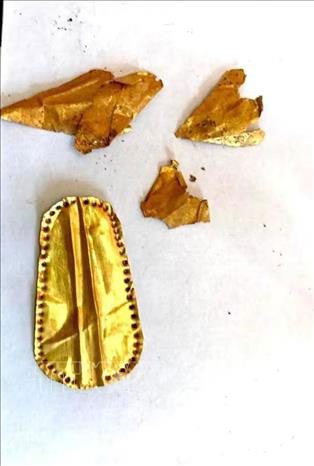According to a reporter in Cairo on November 24, an Egyptian archaeological delegation has announced the discovery of mummies with golden tongues at the Quweisna archaeological site in Menoufiya province, located about 90 kilometers north of Cairo.
This discovery was made during excavations conducted over the past three months at the Quweisna necropolis in Menoufiya province, situated in the heart of the Nile Delta.

Mummies discovered at the archaeological site in Quweisna, Menoufiya province, Egypt. (Photo: THX/TTXVN).
The archaeologists also found a collection of clay pots, numerous gold plates shaped like scarabs and lotuses, several stone amulets used for the deceased, and stone containers used in funerary rituals dating back to the late period of ancient Egypt, the Ptolemaic period, and the Roman era.
The Secretary-General of the Supreme Council of Antiquities of Egypt, Mustafa Waziri, stated: “the mummies with golden tongues are in a state of poor preservation.” The skeletons and remains of the mummies were covered with gold plates contained within human-shaped wooden coffins, and traces of copper that were once used to create the coffins were also discovered.
Ayman Ashmawi, head of the Egyptian Antiquities Department, affirmed that the newly discovered archaeological area at the Quweisna necropolis features a distinct architectural style. He explained that the discovered tombs were made of mud bricks and consist of a main hall with three arched burial chambers and a burial shaft with two side rooms.

Some gold plates excavated at the Quweisna necropolis in Menoufiya province, Egypt. (Photo: THX/TTXVN).
The Quweisna necropolis, one of the most important archaeological sites in the Nile Delta, contains many tombs and burial chambers from various archaeological eras. This collection reveals changes in the architectural style of tombs and burial practices used in different periods.
During recent archaeological seasons, the Egyptian delegation has successfully uncovered a collection of tombs, remains of buildings, mummies, sarcophagi, and coffins, including a giant human-shaped sarcophagus carved from black granite intended for one of the high priests of the ancient city of Atribis in Lower Egypt (now the city of Banha in Qalioubiya province, north of Cairo).

















































